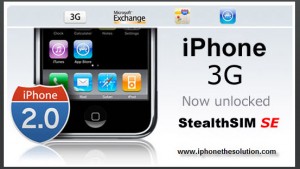 I am sure that the folks in Cupertino thought the whole idea of the App Store for the iPhone would be a great idea, and in fact it has proven to be a great money maker. At the same time though it has also turned out to be one of their biggest headaches that just doesn’t seem to want to go away. While some developers have been making money hand over fist others have been dealing with long approval wait periods or just having their applications pulled. Often those being pulled are being left in limbo as to why and what needs to be done to get back on the marketplace.
I am sure that the folks in Cupertino thought the whole idea of the App Store for the iPhone would be a great idea, and in fact it has proven to be a great money maker. At the same time though it has also turned out to be one of their biggest headaches that just doesn’t seem to want to go away. While some developers have been making money hand over fist others have been dealing with long approval wait periods or just having their applications pulled. Often those being pulled are being left in limbo as to why and what needs to be done to get back on the marketplace.
The most recent incident of an application being pulled though is raising the specter of Apple censorship; or at least applying their own moral judgment of whether an application can be listed. Such is the case of Infurious Comics and their Comic Reader that was meant for easier distribution and reading of Web comics on the iPhone. They got in hot water with Apple because the application comes with a free issue of Infurious’ Web comic Murderdrome an admittedly dark and bloody comic.
and their Comic Reader that was meant for easier distribution and reading of Web comics on the iPhone. They got in hot water with Apple because the application comes with a free issue of Infurious’ Web comic Murderdrome an admittedly dark and bloody comic.
The big problem I have with this whole thing is that I am torn on how to re-act to this kerfuffle because on one hand Apple is totally within their legal right to have pulled the application. As the company states right in the iPhone SDK:
Applications must not contain any obscene, pornographic, offensive or defamatory content or materials of any kind (text, graphics, images, photographs, etc.), or other content or materials that in Apple’s reasonable judgment may be found objectionable by iPhone or iPod
touch users.
Apple is going to have a really hard time with this because of the ambiguity of the statement. Who is going to decide what is obscene or offensive? Does Apple in its role as a hardware and software provider have the right to dictate what a third party creates for sale with their software to be played back through their hardware which they have sold. I am sure that one could say that as the provider of the store by which these applications are sold they have the right to set the conditions of any sale.
That said though, the only reason that the Comic Reader application was pulled was because of the free comic that came with it. so in all reality, Infurious Comics could put the application back for sale but without the comic and it should be acceptable. However, this is where we come to the second part of the problem – the distribution of the comics produced by Infurious of which I imagine Murderdrome would be one of many. From what I have gathered, once the Comic Reader is installed, the user would be able to buy more comics from the iTunes store but this would then raise the possibility of the comic being banned from there as well.
During all this Apple is also having to deal with people who are not happy about the idea that the company has built in a kill switch into the iPhone software that would allow them to remotely remove software on the iPhone for whatever reason they deem fit. Now you tie in this possibility of becoming a censor of material available via iTunes and Apple could be facing some serious backlash from its customers. Especially considering as pointed out by Philip Elmer-DeWitt in his post Apple 2.0 on Fortune that iTunes already carries movies that would technically hit this censorship wall the same way that Infurious has:
on Fortune that iTunes already carries movies that would technically hit this censorship wall the same way that Infurious has:
By Wednesday morning, the post had drawn dozens of responses — all sharply critical of Apple — and PJ Holden’s cause had been picked up by half-dozen sympathetic bloggers (see Techmeme
).
Murderdrome’s most energetic defense was posted by blogger Mike Cane
, who rattled off (with live links) several equally violent works of fiction published without fuss or warning on the iTunes store, including South Park,Reservoir Dogs and Lock, Stock and Two Smoking Barrels.
I can understand why Infurious ran afoul of Apple this way and why in some ways Apple is totally within its right to do what they have done, considering the language of their SDK, but are they really ready for the reaction? On top of that, if they do stand by this action without finding a workable solution to the problem are they setting themselves up to become an Internet censorship board? All I know is that this isn’t a position that I would want to find myself in.

















